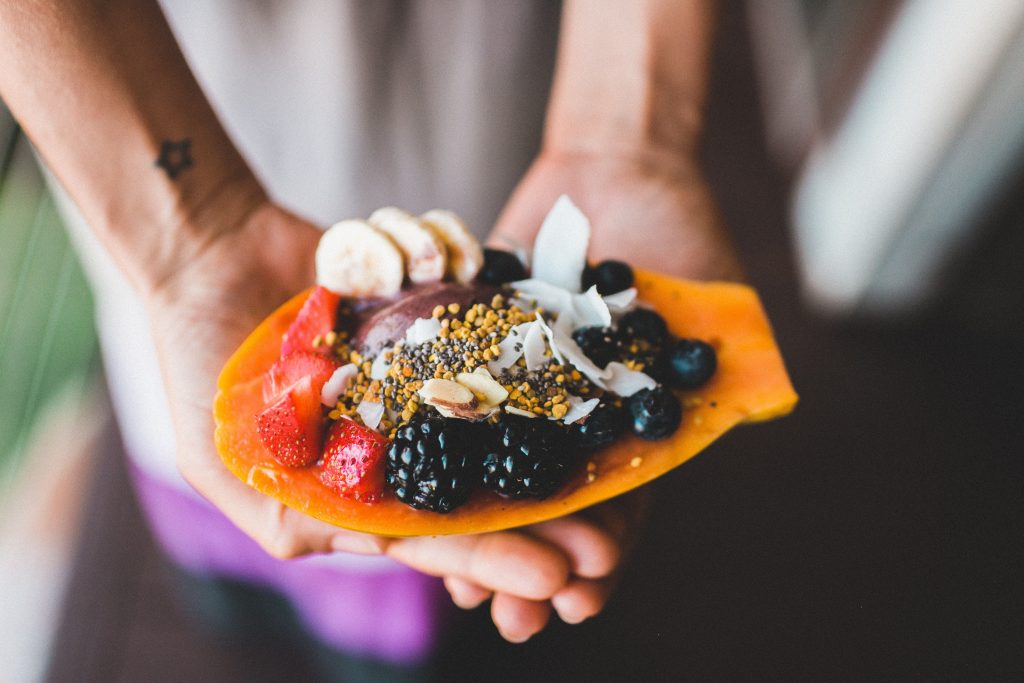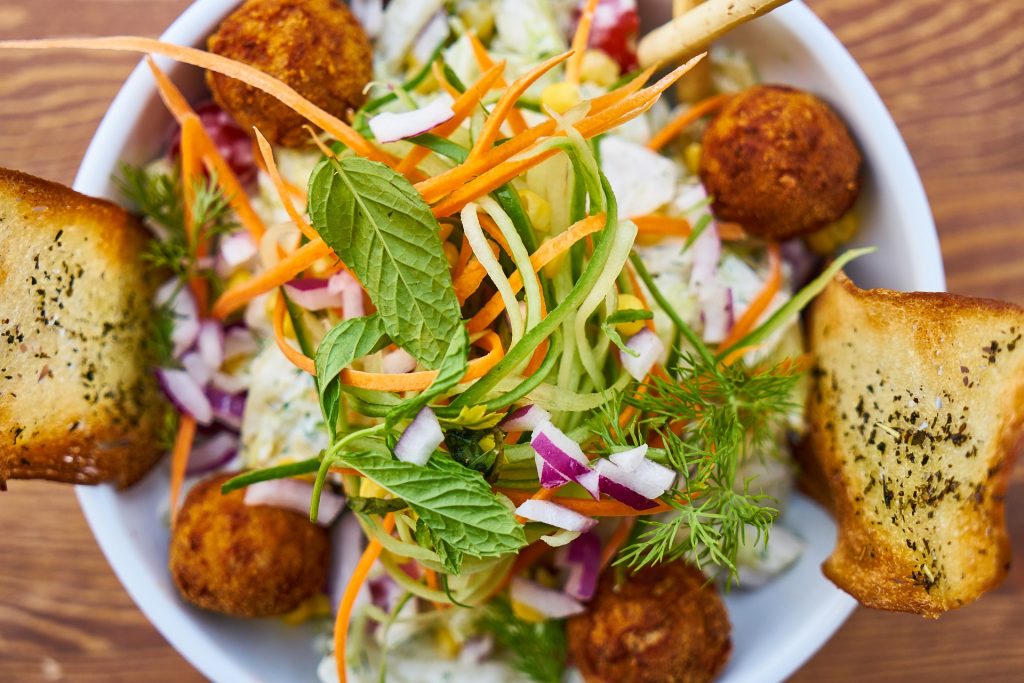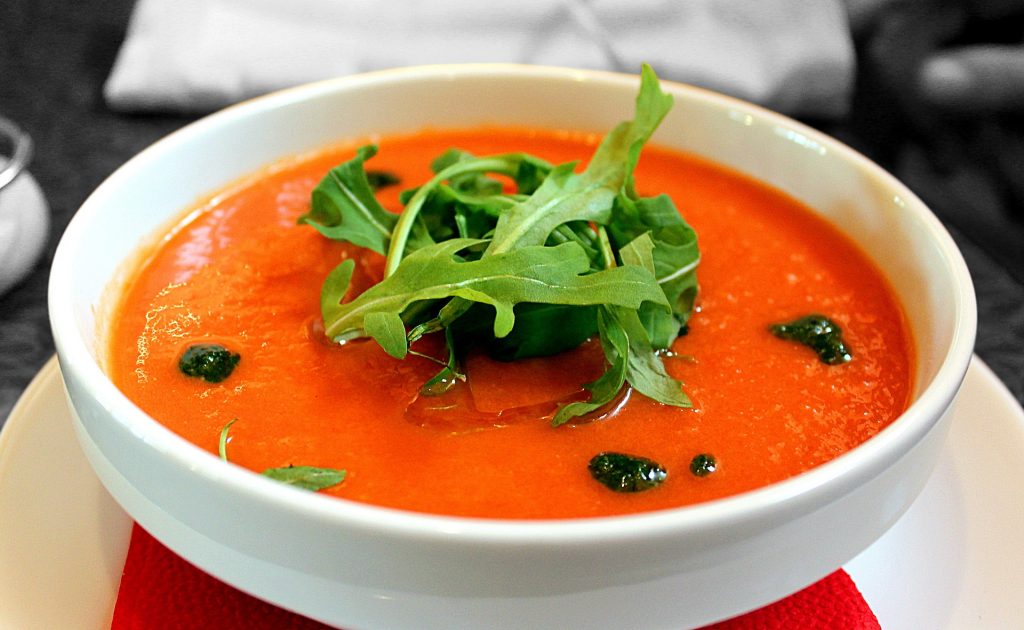
Raw foodism, also known as rawism, consists in consuming food of agricultural origin that are 100% biological and as fresh as possible, such as vegetables (vegetables and legumes sprouts) and fruits, all in a natural state, that is, raw. All animal origin products (meat, fish and their derivatives) or processed products stay off.
Cooking, roasting or frying foods means the loss of nutrients and energy. According to David Jubb, an Australian neurophysiologist, one of the references in this area, considers that when food is subjected to a temperature higher than 42 degrees Celsius, their enzymes are destroyed and there are also many vitamins and minerals lost, as well as many free radicals. In effect, high temperatures modify and stress food molecules, removing their vital energy.
“If we eat stressed foods, not to mention how they are bred, harvested or slaughtered until they get to our table, why do we find it strange that we are stressed on a daily basis and with certain diseases?”, many nutrition experts questioned.
Assuming that vegetables and fruits might represent around 50% of our daily food intake, by ingesting them raw or lightly boiled with little water, we are giving our body, foods with higher amounts of digestive enzymes, bioactive compounds, fiber, vitamins, and minerals. This option also eases digestion, since the transit in the digestive tract of these foods, depending on each person, is done between 24 to 36 hours, while cooked food can exceed this time interval and there are even cases where they reach or exceed 72 hours.
The Human Being is an alchemical center, so it is better prepared to transform raw food than cooked foods to be absorbed by our cells.
The followers of this diet, such as the Brazilians nutrition experts, Elias Pereira, Conceição Trucom or Zita Zamberlan, also justify this option with the fact that we have to stop overloading our body with toxic waste, leaving it clean and with sufficient energy for the vital processes: healing and cellular regeneration.
But careful, the confection of natural or raw food needs a doubled care in the disinfection of food to prevent against food poisoning risk. That is why the use of fire to cook certain foods is controversial because it makes it easier to chew them, for example, meat or fish, and temperatures above 60 degrees Celsius kill bacteria and microorganisms harmful to our body, preventing the spread of certain diseases. There are scientists and nutritionists who also point out that the fire increases and provides certain antioxidants (beta-carotene and lutein) contained in foods, whereas in the case of raw foods would not be absorbed by our body.
Harvard University professor of anthropological biology, Richard Wrangham, stresses that the discovery of fire has made it possible to improve our brain and the consequent evolution of our species. Richard Wrangham gives the example of monkeys who spend all day chewing on raw foods, while humans conserve energy in their digestion by cooking them and use energy toward other functions.

But before moving forward exclusively into rawism, you should try raw foods to train your taste buds, as there are certain foods with a less pleasant taste for the unaccustomed ones. There also will be the amount of food, you may need to eat more than the usual to feel full.
Start with one raw meal a week, then do one a day for a week and then test a full week to see how it fits. Test it gradually to not have unpleasant surprises and also to take time to reinvent yourself in the kitchen.
The biggest followers of rawism are necessarily vegans or vegetarians and more mercurial people (read the text on “Three Philosophical Principles of Life“), although this type of food is attracting more and more people.
A meal can have fruits (lemon, orange, avocado, banana or coconut …), fresh vegetables (spinach, lettuce, cucumber, broccoli, cabbage, parsley, onion, tomato and peppers …), micro greens (sprouts of arugula, basil, broccoli, wheatgrass, pea, beetroot, sunflower, lettuce, chia, lentils, coriander, watercress, mustard, kale, chives, radish, beans, peas and turnip …), tree nuts (nuts, chestnuts, almonds …), seeds and seaweed. For seasoning, you can use olive oil, linseed oil, coconut, sesame, pink salt of the Himalayas or sea salt, apple cider vinegar, soy sauce, curry, turmeric, turmeric, ginger, pepper, garlic powder, nutmeg, dry ginger, among others. And for sweetening, use agave, stevia, raisins without seeds or dates.
“It’s obvious that food can also be cooked, but it has a lot more value when raw because it maintains the nutrients,” says Márcia, a Brazilian graduate of Economics and former employee of the telecommunications operator Portugal Telecom, quoted by the newspaper Público in “Lunch is raw. “
To test rawism food you can try it at home or go to a specialty restaurant, for example in Lisbon you have Bem-Me-Quer, in the Almirante Reis avenue or the gallery coffee, House of Wonders in the center of Cascais, Lisbon.

Feel more about nutrition in:
Three Philosophical Principles of Life
The energy that makes atoms, cells and the universe vibrate
Food must respect the “nature and state” of the Human Being
Does an obsession with perfect nutrition an imbalance?
Reinforce your awareness in:
https://www.facebook.com/ritazamberlan/
https://www.delas.pt/alimentos-crus-sao-a-solucao-para-os-nossos-males/
http://www.ecocenter.pt/microvegetais.html
http://www.vidaemestadocru.com/p/o-que-e.html#sjump
https://www.youtube.com/watch?v=0wfQUtkabBE
https://www.publico.pt/2015/02/22/sociedade/noticia/o-almoco-esta-cru-1686757




